Of course no one should ever expect a Disney produced project to stay true to the source material; this is the studio that made Hercules mortal by inept poisoning instead of it being because Zeus just couldn’t keep it in his pants, and so a Disney Tarzan was never going to be the pulp adventure hero that Burroughs penned. Like the 1999 movie this series will have a Jane Porter (Olivia d'Abo) who is decidedly British, and a Tarzan (Michael T. Weiss) who spends much of his time scrambling around on all fours and speaking in somewhat halting English. Like the 1976 Filmation series Tarzan, Lord of the Jungle this Ape Man will not be a killer, not even in self-defence, but will defeat most enemies with the strength of his mighty limbs, but luckily by the 1990s Standards and Practices had lessened some of the restrictions on what violence could be included in a show for kids, and so Tarzan isn’t forced to spend all his time dodging opponents as he did in the Filmation series, he's able to properly fight back.
Though a knife would certainly come in handy here.
What stands out most when watching Disney’s The Legend of Tarzan is the quality of the animation, once again we are treated to Tarzan beautifully surfing the jungle like and Extreme Sports God, and nobody does character designs better than the people at Disney. As I mentioned earlier the writers of this show were rather hamstrung by the feature movie and so we get a slightly less civilized jungle man than Burroughs depicted in his books; Jane and Tarzan’s relationship in the first few books was fraught with misunderstandings and abductions, opposed to the Disney movie where they just kind of fell in love and decided to get married. The animated series picks up shortly after the movie ended with Jane now blissfully married to Tarzan and living with him in a fabulous treehouse (a treehouse more in keeping with the Johnny Weissmuller Tarzan films), and sharing their life in the jungle is Jane’s absent minded father Professor Archimedes Q. Porter (Jeff Bennett), the cowardly elephant friend Tantor (Jim Cummings), and Terk (April Winchell) Tarzan’s female gorilla pal. For those of you thought that the Rosie O’Donnell Terk in the movie was annoying it’s increased tenfold for the show. They have a running gag where Tantor is constantly falling on her, but instead of it killing her, as it would most living creatures, it just provides bad comedy.Tantor and Terk, the Two Stooges.
A Few Words on the Language Barrier: One element really bothered me while watching this show was the use of talking animals. Terk, Tantor, and all the gorillas seem to be speaking colloquial English, but when visitors come to the jungle they ask about Tarzan’s amazing ability to speak to the animals. We apparently are supposed to assume that Tarzan taught Jane and her father to speak the language of the beast, yet at times we see Jane correcting Terk’s grammar on occasion. So are they speaking English or is Jane even a grammar Nazi in ape language? Even stranger is that we often see Tarzan, Jane and even Terk going, “Ook, ook.” When speaking to monkeys. There is just no consistency on display here, but then again I’m probably over thinking what’s basically a show aimed at kids.In my review of Filmation’s Tarzan, Lord of the Jungle I mentioned how impressed I was that they managed to use elements straight out of the books, not completely faithful but the spirit was there, and now in the case of Disney’s The Legend of Tarzan we see even more characters from the books brought to life, but sadly most of it seems like simple name dropping, and I doubt the writers of the show did more than glance at the chapter headings. One classic Tarzan location that appears in both the Filmation series and the Disney one is the lost city of Opar, and strangely enough both shows get it completely wrong. In the books Opar was a lost outpost of Atlantis; populated by beautiful women and hideous ape like men, and ruling over them was their queen and high priestess La. Any who fell into her clutches would quickly find themselves sacrificed to the Sun God; unless of course you were Tarzan because then you’d capture the heart of La, spurn her advances, and then loot the city’s vaults of the gold hidden there. In the Filmation series Opar is seen as an abandoned ruin, no hot tempered priestess to be seen, and certainly no spurning going on, but in the Disney series we do have Queen La (Diahann Carroll). She’s no Atlantean priestess but a sorceress with an army of leopard men.
Note: Her leopard men are not to be confused with the sadistic cult in the book Tarzan and the Leopard Men as these aren’t men in costumes but animals transformed by magic into bipedal monstrosities.
Queen La herself is not a descendant of fabled Atlantis; we learn she was once a member of the local Waziri tribe who was forced out due to her evil practitioning of forbidden magic; it’s her magic staff that allows her to transform animals into humanoids as well as turn humans into animals, and she can even animate giant stone statues to do her bidding. Like in the book The Return of Tarzan La falls in “love” with Tarzan and when he tells the Queen that he loves Jane things get a bit dicey. In the episode Tarzan and the Leopard Men Rebellion the titular leopard men kidnap Jane so that she can become their new queen and free them from being the abominations La had turned them into. When the magic staff is broken the leopard men revert to being just plain old leopards, and La herself turns to dust. Of course that isn’t the end of her evil ways for in the episode Tarzan and the Return of La the evil queen’s spirit manages to possess Jane. The book version of La is vastly more sympathetic, almost a tragic figure whose love for Tarzan is her only escape from her horrible life, but the Disney version of La is equally great in a totally different manner. This is the one thing Disney changed that I could get completely behind.
Also their version of Queen La is totally hot.
That she was once a member of the Waziri is a bit strange and unnecessary, but then again this show’s version of the Waziri is nothing like in the books. In the books the Waziri tribe are Tarzan’s closest allies and often provide numerical back-up if Tarzan finds himself against enemies of superior numbers, but the shows change to making them just a neighbouring tribe is probable a way to distance themselves from the racists overtones that Burroughs was sometimes accused of. In the books Tarzan often referred to the Waziri as “His children” and one could certainly take a white father figure commanding a group of blacks to be if not racist a little patronizing. So that change I will give Disney a pass on, but what I don’t understand is the name dropping of name Muviro in the episode Tarzan and the Eagle’s Feather. In this episode Muviro (Kevin Michael Richardson) is jealous Waziri warrior who hates Tarzan and tries to steal a woman betrothed to a fellow tribesman, but in the books Muviro is the leader of the Waziri and next to Paul D’Arnot is Tarzan’s closest friend. Why Disney would pick that particular name to make into an enemy for Tarzan is beyond me, why not just make one up?This is something they did in the movie as well where they gave the head villain the name Clayton when in fact Clayton is actually Tarzan's real name, and it kind of drives me crazy. Speaking of enemies the show does borrow; one of Tarzan’s most notorious enemies from the books, the nefarious Nikolas Rokoff (Ron Perlman), does make an appearance here.
Nicholas Rokoff and his henchman Alexis Paulvitch.
These two villains first appeared in the book The Return of Tarzan and they crossed paths with our hero when he foiled a plot they had to discredit a Count, and later Tarzan foils their espionage plans when the try to obtain classified military information. Then in the next book The Beasts of Tarzan Nicholas Rokoff kidnaps Tarzan’s wife and child, which puts him right at the top of any villainy list, but what is Rokoff doing in this Disney version? He’s in Africa looking for pirate treasure, and when he learns that the location of the buried treasure is fraught with danger he kidnaps Jane to force Tarzan to retrieve the treasure. So this Disneyfied Rokoff isn’t quite as well rounded and evil as his book counterpart, he’s more of the Snidely Whiplash School of Villainy type character.Queen La and Rokoff are not the only villains to make the transition from the books to the show; we have Tublat (Keith David) who was a rival ape to Kerchak’s rule, and One Punch Mulligan, the World’s Heavyweight Champion, who visits Africa as a publicity stunt. When Tarzan accidentally knocks him down with “one punch” the fighter does everything he can to get a re-match with the Ape Man, but aside from the character’s name there is much from the book story collected in the book Tarzan and the Castaways. In story “Tarzan and the Champion" One Punch Mulligan comes to Africa to hunt and bag some trophies, but after machine gunning down any wildlife within range he finds an angry Tarzan on his trail. Unlike his animated counterpart the Mulligan in the book learns the value of all life, including animals, and becomes Tarzan’s friend. In the episode One Punch Mulligan he’s just a blowhard that leaves in disgrace after being accidentally punched out by both Tarzan and Terk.
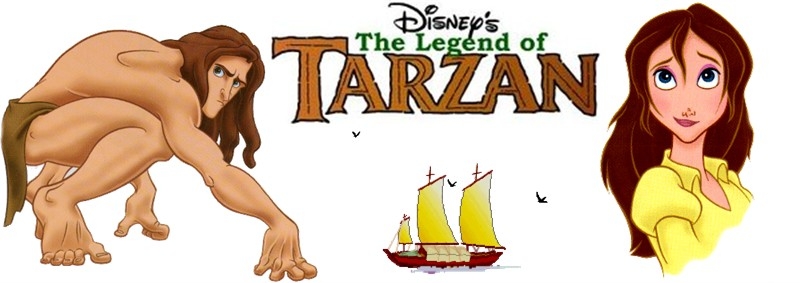
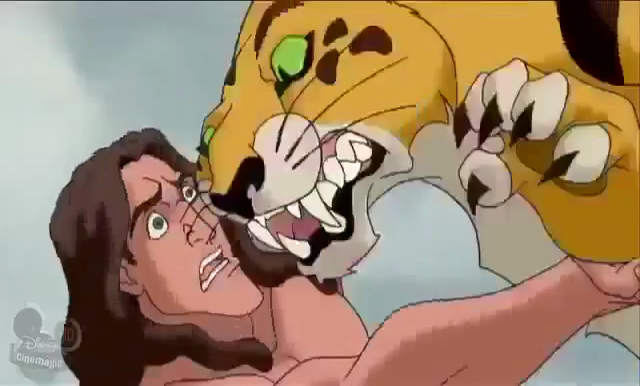
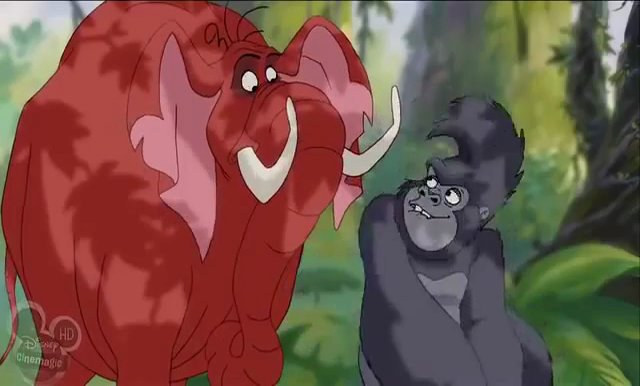
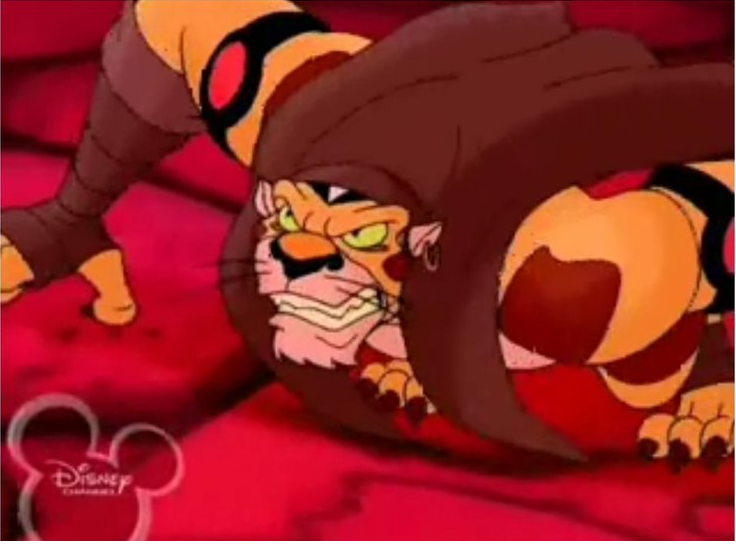
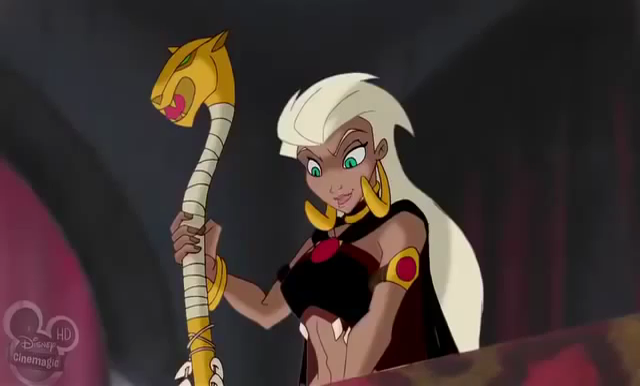
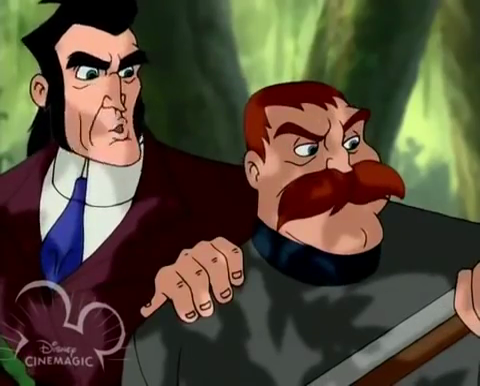
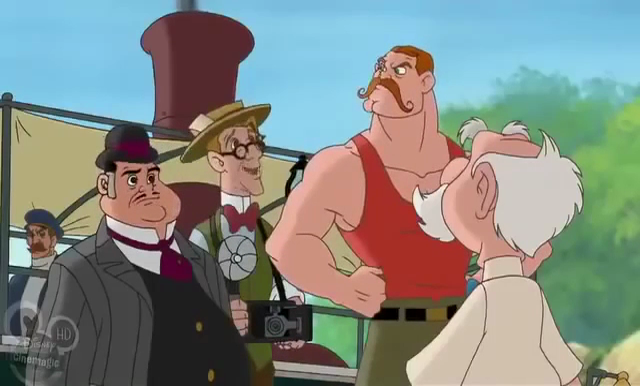
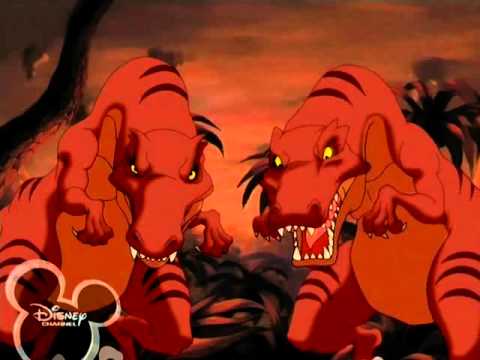




No comments:
Post a Comment